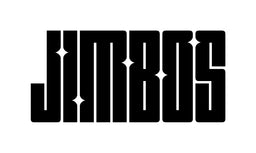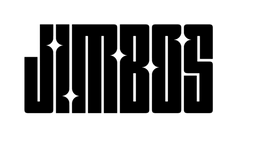The Importance of Final Inspections in Interior Detailing
The last 5% of a detail separates an average job from a professional one. In this guide, you’ll learn how to perform an interior detailing final inspection — the process that ensures every surface looks, feels, and smells perfect before you hand over the keys or call the job done.
Estimated Reading Time: ~8 minutes
Why Final Inspections Matter
It’s easy to rush a job after hours of cleaning, but skipping a final check can ruin first impressions. Whether you’re detailing for a client or yourself, final inspections ensure every surface meets professional standards — clean, uniform, and properly protected.
- → Catches missed spots and streaks before delivery.
- → Ensures even finishes on plastics, glass, and trim.
- → Helps prevent customer complaints and callbacks.
Step 1: Set the Right Lighting
Good lighting reveals everything. Open all doors and windows to let in natural light, or use portable LED lights to inspect tight areas like under seats and door pockets. Poor lighting hides streaks, lint, and uneven dressing application.
Inspect from multiple angles — what looks clean from the front may show residue when viewed from the side.
Step 2: Check Every Surface Methodically
Work from top to bottom and back to front. Inspect the dashboard, vents, screens, cupholders, door panels, and seats. Feel surfaces with your hand — a clean surface should feel smooth and dry, not tacky or slick.
- → Touch points like steering wheels and switches should be residue-free.
- → Fabric seats should feel evenly clean with no water rings.
- → Plastics and trim should have an even, matte finish.
Step 3: Use the Right Towels for the Finish
For streak-free results, finish your inspection with a Softer Than Soft Microfiber Towel. The plush, edgeless design gently removes any lingering dust or lint while enhancing the final look of the interior. It’s especially ideal for glass, piano black trim, and touchscreens.
Perfect Every Final Touch
Softer Than Soft Towels give your interior that showroom-ready finish — lint-free, streak-free, and safe on delicate surfaces.
Shop Softer Than Soft Towel Buy on AmazonStep 4: Inspect Glass and Mirrors
Glass is often overlooked during interior details. Use two microfiber towels — one slightly damp for cleaning, one dry for buffing — to remove haze and streaks. Pay attention to the top edges of windows and rearview mirrors.
Clean interior glass with straight vertical strokes, and exterior glass with horizontal strokes. This way, you can instantly identify which side a streak is on during inspection.
Step 5: Evaluate Scent and Air Quality
A car can look spotless but still feel unclean if it smells musty. During your final check, turn on the HVAC system and verify there are no lingering odors. If needed, lightly mist the cabin with an odor neutralizer — never a heavy fragrance — for a natural, clean scent.
Step 6: Final Presentation — The “Customer View”
Finally, sit in the driver’s seat and experience the car from your customer’s perspective. Look around slowly. This final step often reveals details you’d miss standing outside — like missed dust on instrument clusters, fingerprints on glass, or uneven trim dressing.
That’s what separates a quick cleanup from a truly professional detail.
Pro Inspection Comparison
| Inspection Type | What It Covers | Pro Tips |
|---|---|---|
| Visual Inspection | Surface dust, streaks, lint | Use good lighting and multiple angles |
| Touch Inspection | Residue, tackiness, missed areas | Wipe down with Softer Than Soft towel |
| Scent Inspection | Odors, mildew, chemical smells | Run AC and check airflow freshness |
Finish Like a Professional
Every great detail ends with a flawless inspection. Keep Softer Than Soft Towels in your kit for the final pass that makes every surface perfect.
Shop Softer Than Soft Towel Buy on AmazonPro Tips for a Flawless Final Inspection
- → Always inspect after full drying — moisture hides imperfections.
- → Keep a dedicated inspection towel for final wipe-downs.
- → Use a small LED flashlight for crevices and door jams.
- → Check under seats and inside storage areas for missed debris.
- → Leave the interior smelling clean, not perfumed.
Related Reading
- The Ultimate Interior Detailing Guide for Beginners
- How to Detail a Car Interior Efficiently (Top-to-Bottom Method)
- How to Properly Clean and Disinfect Touch Points
- Why Your Interior Still Feels Dirty After Cleaning
- How to Deep Clean Your Dashboard Without Damage
FAQs
What is a final inspection in detailing?
It’s the process of reviewing your entire job before completion to catch missed areas, correct streaks, and ensure consistent finishes across all surfaces.
When should I do the final inspection?
After the car is fully dry and all cleaners or dressings have set — this gives you a true read on finish quality and texture.
What lighting is best for inspection?
Natural light is ideal, but LED spotlights or handheld inspection lights reveal fine dust, lint, and streaks more effectively indoors.
How do I get rid of streaks or residue during inspection?
Use a Softer Than Soft Towel for final touch-ups. It lifts residue without scratching or leaving lint.
Why is smell part of the inspection process?
Scent plays a huge role in how “clean” a car feels. Neutral, fresh-smelling interiors improve customer satisfaction and overall presentation.



